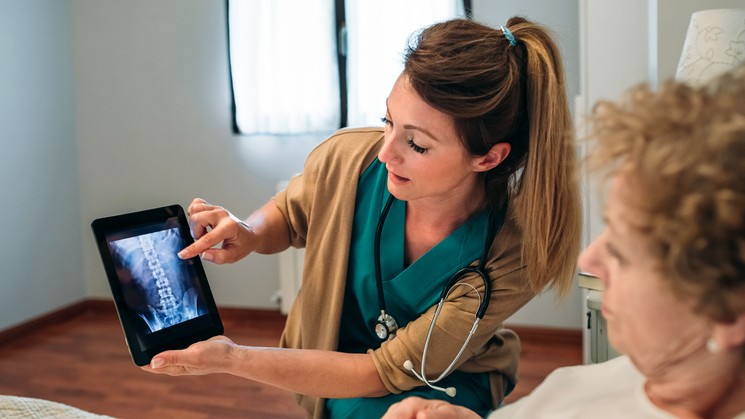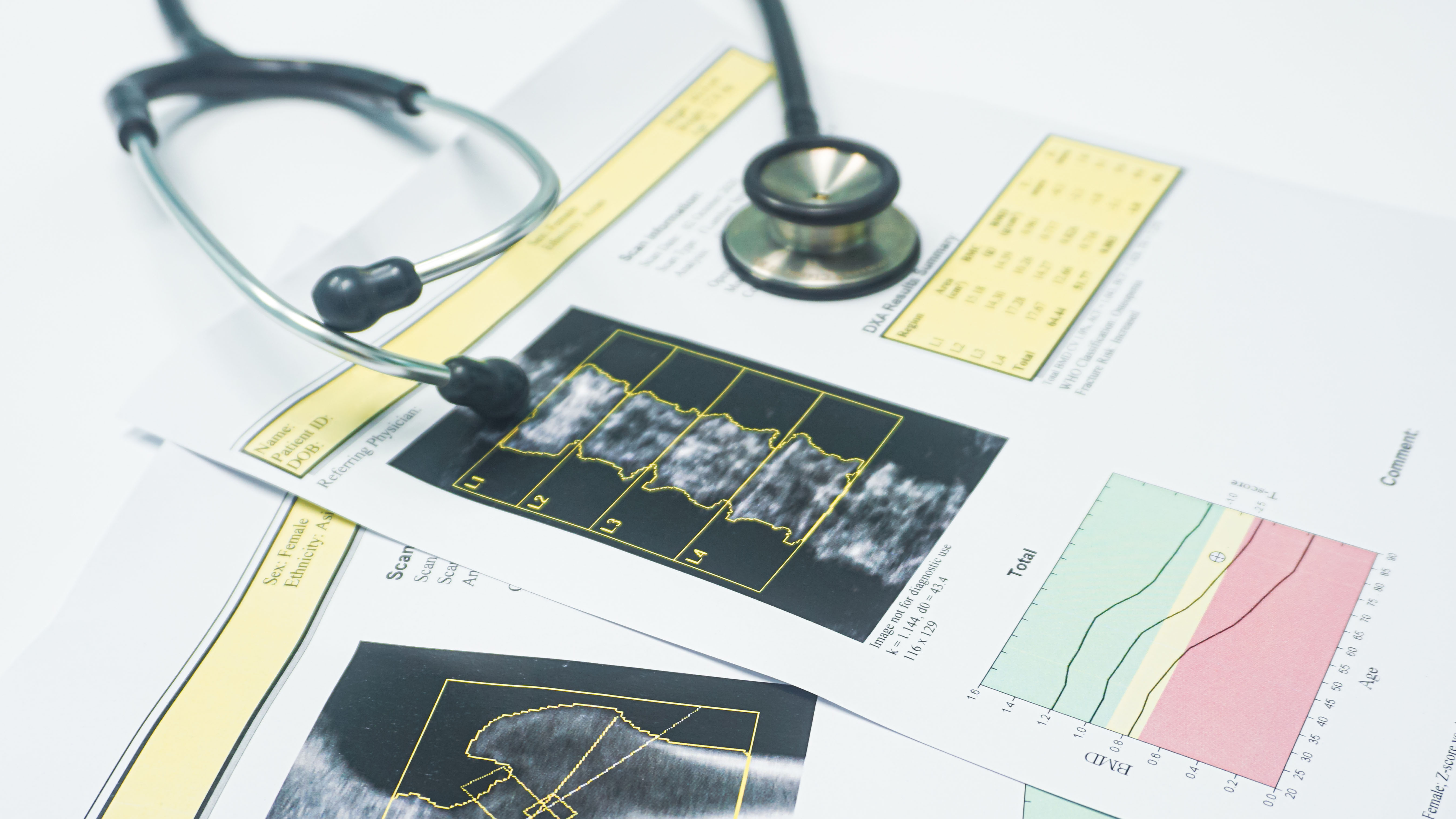What is bone density?
What is bone density and why is it critical to our overall health?

What is bone density? Put simply, it is a metric used to measure the strength of your bones – and a helpful method of assessing the potential risk of osteoporosis, a condition that weakens bones and makes them more liable to break. Bone osteogenesis – the strengthening and development of our bones – is a desirable outcome, regardless of age and physical condition, as it is critical in maintaining a functioning skeletal system.
Whether you’re concerned about the prospect of osteoporosis, or want to check out the best adjustable dumbbells and are wondering how resistance training could impact your bone strength, an understanding of bone density is vital in getting a grasp on your overall health.
Research in the journal Bone has found that up to 80% of an individual’s bone density variations are determined by genetic factors. However, as we age the mineral content in our bones decreases and they become more porous, a process known as osteopenia. In the case of osteoporosis, this degenerative condition accelerates the process to the point where fractures become more commonplace (especially in women) for those over 50. This is because, according to research in the Journal of Osteoporosis, skeletal changes are known to progress faster in women as a result of post-menopausal hormone changes in the body.
What is normal bone density?
Beyond genetics, gender and aging, an array of factors contribute to a loss of bone density, including nutrition, lifestyle choices and overall health. This loss is measured in “standard deviations”, a method of comparing an individual’s bone density against that of the average 30 year old, a system devised by the World Health Organization in 1994. A healthy bone density, or T-score, is considered to be anything up to -1.0 in comparison to that mean average.
While some factors relating to bone health are beyond our control, healthy lifestyle choices, such as not smoking, restricting alcohol consumption and frequent exercise can make a significant difference to maintaining and strengthening bone density.
According to Joe McKale, the head coach at Taylor’s Gym, “resistance training can also increase bone density. This helps an individual to be more robust to breaks, fractures and reduce the chance of osteoporosis.”
Improving bone density

Lifting weights shouldn’t just be for the young. According to McKale: “Weight-bearing exercises later in life can also help to attenuate the decay of bone density with age.” This means that even those in later life will feel the benefit of frequent resistance training.
Get the world’s most fascinating discoveries delivered straight to your inbox.
As our population develops a larger proportion of elderly people, osteoporosis is expected to become a problematic issue. As such, taking steps as an individual to safeguard bone health is advocated by the healthcare community, offering positive outcomes for yourself and the wider society by not adding to the burden on a healthcare system.
Walking is also key to improving bone density, especially in those that are middle-aged or older. Frequent walks are a weight-bearing exercise and can positively alter the body’s micro-architectural bone configuration, leading to improved maintenance of bone strength.
- Related: Does walking build muscle?
The low-impact nature of cycling offers negligible improvements in bone density strength, while rowing only offers improvements in the lumbar region of your spine. Most important, though, is the frequency of the exercise. Three times a week or more is key to the routine making a positive difference to the bone density of the individual. Any less and studies find that improvements are negligible.
In terms of improving bone density, ensuring that your calcium and vitamin D intake meets the daily recommendation is key to promoting and maintaining musculoskeletal health. This means low-fat milk, yogurt and cheese (or vegan alternatives) to get your required calcium fix, while qualified exposure to sunlight, dietary supplements and food nutrients are key to maintaining an adequate vitamin D intake. Naturally, this becomes important as we age, as it strengthens the bones of those who are the most frail. Finally, ensuring that you have enough calories in your diet is also key, especially for older people who tend to eat less as they age.
- Related: How to increase bone density
Can your bone density be too high?
A recent American study found that of four established US healthcare systems, less than a quarter of patients who suffered hip fractures had previously been tested for bone density. As such, the onus on the individual to take care of their own bone health is clear. While low bone density is connected to osteoporosis, an overabundance of high bone mineral density isn’t necessarily good either, with research findings from Rheumatology suggesting that elevated BMD can also point to an increased risk of fractures. With 2.5 standard deviations above the mean average being considered as high bone density, it isn’t something that should concern the majority of people, especially as aging naturally counteracts this phenomenon.
It is clear that preserving bone density is paramount in maintaining holistic physical health. The skeletal structure forms the foundation for mobility and injury protection and should be properly maintained, especially as we age. Thankfully, many of the steps towards sustaining and improving our bone health are likely already integrated into a healthy lifestyle, and are relatively simple to achieve as a beginner. With that in mind, looking after our bone density is something we should all keep in mind.
Further reading
Genetic determinants of bone mineral content at the spine and radius: a twin study.
Similarities in acquired factors related to postmenopausal osteoporosis and sarcopenia.
Dan Cooper is an experienced fitness writer who firmly believes in the power of running. The hardest race he has completed so far was Tough Guy, the world’s oldest and most demanding OCR event. There he learned that you may be able to outpace opponents, but outrunning hypothermia? That's a different race entirely.



